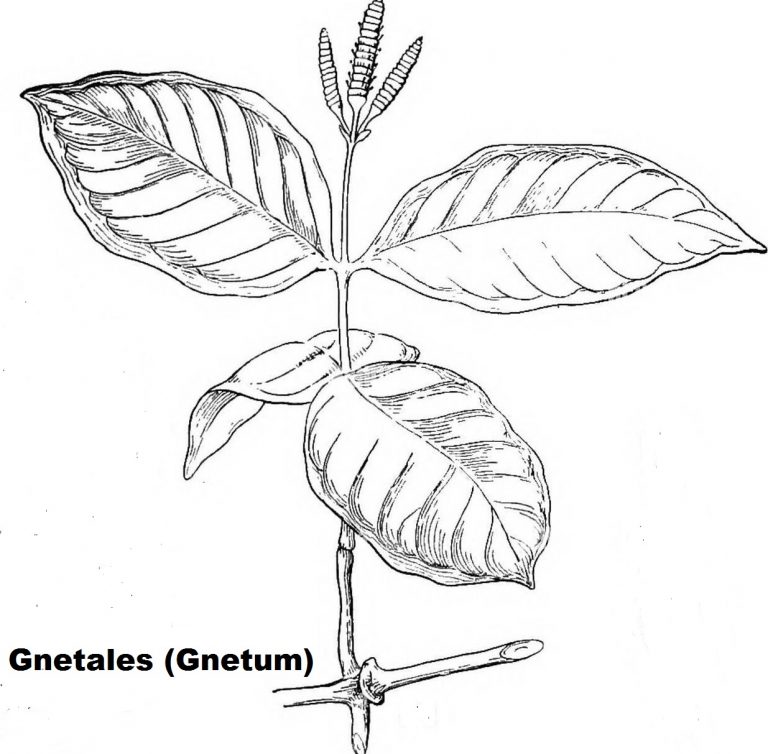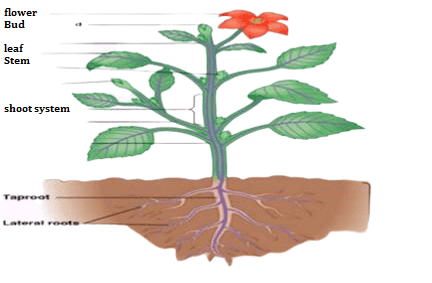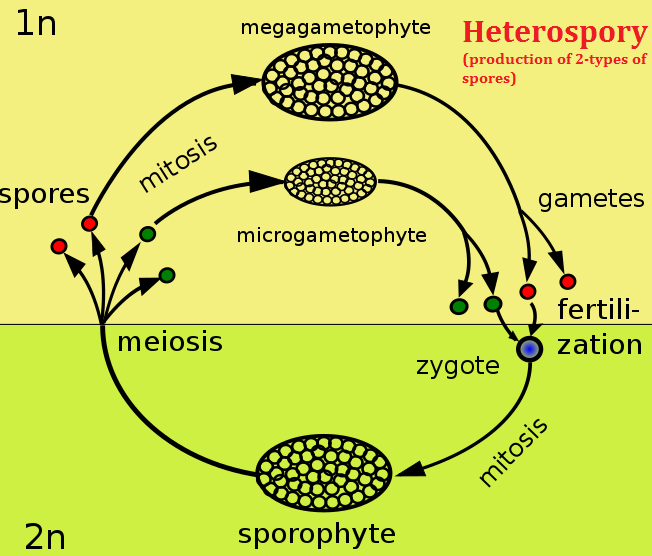Ginkgo (Ginkgo biloba): Features, Morphology, Anatomy and Affinities
Taxonomic status of Ginkgo biloba
| Kingdom | Plantae |
| Phylum | Ginkgophyta |
| Class | Ginkopsida |
| Order | Ginkgoales |
| Family | Ginkgoaceae |
| Genus | Ginkgo |
| Specie | G.biloba |
Binomial Name: Ginkgo biloba
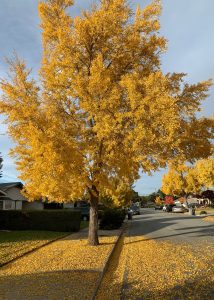
Photo by Kanduri on pexels.com
History
Ginkgo biloba, a species from the gymnosperm group is native to China and Japan. Ginkgo has been planted since ancient times (about 1500 years ago) in temple gardens. This deciduous, ornamental tree is now valued in many parts of the world as a fungus and insect-resistant. It is also known as the “maidenhair tree”. Englebert Kaempfer (1690) was the first European botanist who reported the Ginkgo tree in Japanese temple gardens. Its occurrence in old temples makes it a sacred tree. It is worshipped in Japan and China. For about 3,500 years old tree has been found in China. All these reports show that Ginkgo is one of the oldest trees on the globe.
Morphology
The tree of Ginkgo biloba consists of the following parts.
a) Trunk
The trunk of this sacred tree can reach a height of 40 meters with a spread of about 8 meters. This high trunk can attain a diameter that may range from 3 to 4 meters. It looks straight columnar and is hardly branched. Young trees usually have a regular pyramidal central trunk with lateral, ascending, asymmetrical branching. The bark is brown and becomes rough with some furrows as the plants get older. The female tree is with a wider crown while the male tree is with slim column and a less spread-out form.

b) Branches
The Ginkgo biloba tree has long and short branches growing at right angles to each other. A short branch may become a long branch and the tip of a long branch may change into a short branch. As the tree gets older, it may attain a more irregular form. The leaves grow alternate on the long branches during spring.
c) Foliage
Leaves are produced on long branches during the spring season. In subsequent years, clusters of leaves are formed on the lateral short branches. Ginkgo is deciduous, and the leaves of some varieties turn a beautiful golden color in the autumn. These yellow to golden leave make this tree an ornamental one. Linear plantation along the roadsides is of great aesthetic value during the spring season.
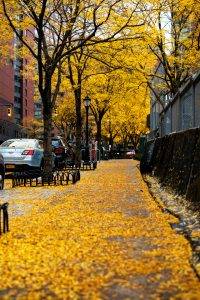
Anatomy of Ginkgo
a) Root
In the transverse section, the roots are somewhat circular in outline. Mature roots are surrounded by phellogen or suberized cells of the cortex. In young roots, a layer of endodermis and uni-layered pericycle is clear. Mature roots, however, lack such a distinction. Diarchy condition is visible in the young roots. Xylem is exarch.

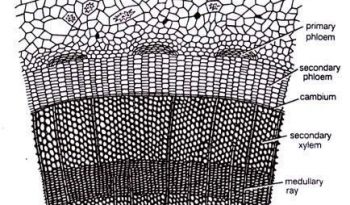
b) Stem
Single layered epidermis surrounds the stem (long and short shoot) of Ginkgo. this layer (epidermis is thickly cutinized. In older plants, the epidermis is replaced by a periderm. The parenchymatous cortex is present inner to the epidermal layer. This region contains mucilaginous canals. This cortex region is wider in dwarf/short shoots. Shorts shoots also have well-marked endodermis and pericycle.
Secondary growth is performed by the cork cambium which cuts the periderm (outer) and secondary cortex (inner). The periderm is present in older stems in place of the epidermis. The secondary phloem consists of sieve tubes and phloem parenchyma.
c) Leaf
Rectangular cells of the lower and upper epidermis surround the leaf in Ginkgo. There is a layer of cuticle covering the epidermis. Mesophyll cells are present in the center but are not differentiated into palisade and spongy mesophyll cells. Mucilaginous canals and a few tannin-filled cells are also present in the mesophyll region. The vascular bundle is of mesarch in nature and is surrounded by a sclerenchymatous bundle sheath in mature leaves.
d) Petiole
The leafy petiole is covered with a layer of the thickly cutinized epidermis. This cuticle layer is not continuous due to the presence of stomata. Inner to the epidermis are hypodermis, mucilage canals, tannin-filled cells, and sphaeraphides distributed in the cortex region. The vascular bundle of the petiole is of endarch in nature which provides supplies of water and nutrients.
Distribution
Different species of Ginkgo including G.biloba are currently present in Zhejiang province (China). However, these were once widespread throughout the world years ago. These limited reserves of Ginkgo have high genetic uniformity suggesting that these trees may have been planted and preserved by Chinese monks over a period of about 1,000 years. The tree found in Southwestern China shows greater genetic diversity arguing its wild nature. There is genetic evidence that these Southwestern populations may be wild and the oldest Ginkgo biloba trees may be older than surrounding human settlements. It is mostly found in soil with a good drainage pH range of 5.0 to 5.5.
Life Cycle of Ginkgo biloba
Reproduction
Ginkgo biloba reproduces by sexual means. It is dioecious, however, the distinction between male and female plants is difficult before reproductive organ formation. The fruiting body is called strobili (singular: Strobilus).
Male Strobilus
Male strobili develop in the formation of reproductive organs. The axil of leaves or on the sides of petiole bases are present on dwarf shoots. The male strobilus of Ginkgo biloba reproduces sexually. Ginkgo is dioecious. Morphologically, the male and the female plants are indistinguishable from a loose structure and consist of a stalked central axis (2-3 cm in length) on which many microsporophylls are arranged spirally.
Each microsporophyll has a long slender stalk terminating into a knob-like portion or hump. It bears two pendent microsporangia in rare instances; a microsporophyll bears three sporangia. The microsporangia develop from a hypo-dermal archesporial cell of the microsporophyll.
A mature microsporangium consists of a multi-layered wall, tape, and microspore mother cells. Inside the sporangium, each microspore mother cell produces four microspores or pollen grains by meiotic division.
Female Strobilus
The female strobili develop in the axil of a leaf or a scale leaf present on dwarf shoots. The female strobili are very much reduced structures. Each strobilus consists of a long stalk or peduncle that bifurcates at its apex and each branch usually bears a single sessile ovule. Out of the two ovules, one remains viable while the other aborts at an early stage. Sometimes, both ovules become viable and develop into seeds.


Ovule:
The ovule has a massive beak-shaped nucleus. In a pre-pollinated ovule, the apical cells degenerate to form a deep pollen chamber, and the pollination drop.
Mega sporogenesis
A deeply situated cell of the nucleus is differentiated into a large megaspore mother cell. The megaspore mother cell wall becomes thick due to the development of a double-layered wall. Now, the megaspore mother cell undergoes meiotic division to form a liner tetrad of four megaspores. The upper three megaspores degenerate, while the lowermost one becomes functional.
Gametophyte of Ginkgo biloba
The spores (either microspores or megaspores) represent the first phase of gametophyte generation. The microspore or pollen grain is the male gametophyte, while the megaspore is the first stage of the female gametophyte which develops into a female gametophyte.
The pollen nucleus undergoes mitotic division to produce a small lens-shaped first prothallial cell towards the proximal end (opposite to the aperture side) and a large central cell on the distal end.
The prothalial cell does not divide, whereas the central cell divides to form a second prothallial cell and an antheridium initial.
The first prothallial cell is ephemeral, while the second prothallial cell is persistent. The antheridial initially cuts off into a small antheridial cell and a large tube cell.
The pollen grains are released from the microsporangium at this 4-celled stage (2 prothallial cells, an antheridial cell, and a tube cell).
Development of Male Gametophyte after Pollination
The further development of male gametophyte starts within a month after pollination. The tube cell of the pollen comes out through the aperture in the form of a pollen tube. The antheridial cell within the pollen tube divides to produce a stalk cell and a spermatogenous (body) cell The spermatogenous cell divides vertically to form two sperm cells (male gametes).
Development of Female Gametophyte
The female gametophyte of Ginkgo develops from the functional megaspore. A thick membrane covers this megaspore. The entire gametophyte becomes cellular and forms tissue i.e. endosperm. The endosperm cells are haploid in nature. The cells that contain 2-3 nuclei during wall-formation transforms into polyploidy cells.
Development of Archegonia
Two to four cells at the micro-polar end of the female gametophyte function as archegonia initials. Each of these cells divides peri clinical to form an outer small primary neck initial and a large central cell.
The primary neck is initial divides by two vertical walls at right angles to each other resulting in four neck cells arranged in one tier. The nucleus of the central cell cuts off an upper ephemeral ventral canal cell and a large egg cell.
Pollination
Pollination generally takes place in May. Pollen grains germinate in the pollen chamber. The pollen tube comes out through the aperture. The pollen tube branches freely showing a proximal unbranched tube and a much-branched haustorial ramification in between the intercellular cells.
Fertilization
Terminal part of pollen tube ruptures and releases sperms in archegonial chamber. The fertilization takes place in September i.e., four months after pollination The two sperms proceed towards the archegonia with a forward and circular motion, ciliary band forming the posterior end. The sperm nucleus fuses with the egg nucleus resulting in a zygote
Embryogenic stage
The zygote enlarges considerably and undergoes free nuclear divisions giving rise to 256 nuclei, evenly placed in the cytoplasm of the developing pro embryo. A dicotyledonous embryo (rarely with three cotyledons) with two vascular bundles is obivous.
Seed
The most striking feature of Ginkgo is the development of an embryo which continues even after the dispersal of ginkgo biloba seeds.
Actually, a major part of the growth of an embryo takes place in the detached seeds that are shed before or just after fertilization. Embryo gets maturity in about seven months. Thus, Ginkgo shows the two-year reproductive cycle where the pollination takes place in spring, fertilization in early autumn of the same year, and the development of the embryo continues even after shedding of seeds. The germination of the ginkgo biloba seed occurs.
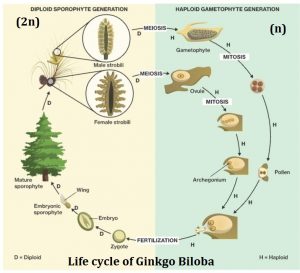
Affinities of Ginkgo biloba
The resemblance with Pteridospermales
- Presence of a leaf gap in the stem,
- Dichotomous open venation in the wedge shape leaves of Ginkgo and pinnules of some seed ferns (pteridospermales).
- A distinct pollen chamber.
- A massive fleshy layer in the ovules.
- Collar at the base of the ovules in Ginkgo and cupule in ovules of some pteridospermales.
- The sperms are motile and multiciliated.
Affinities with Cycadales
- Presence of multi-flagellated spermatozoids.
- Well-developed pollen chamber
- Presence of a large egg, massive female gametophyte, and well-developed venter,
- Endoscopic embryo with two cotyledons.
- Seed with thick and well-developed integument.
- Hypogeal type of seed germination.
Affinities with Ferns
- The leaves of Ginkgo show striking similarity with Adiantum (maiden hair fern) in form, shape, and venation and hence the name
Importance of Ginkgo biloba
Ginkgo biloba has many health benefits.
What is ginkgo biloba good for?
Here is a list of benefits of ginkgo biloba.
Ginkgo biloba leaf extract is used to treat mental health conditions, Alzheimer’s disease, and fatigue. Extract of Ginkgo biloba remained a key ingredient of traditional Chinese medicine for about 1,000 years. Consider the dosage of Ginkgo biloba before using ginkgo biloba extracts.
Ginkgo biloba leaves are used as a herbal remedy to treat many diseases.
- anxiety and depression
- insufficient blood flow to the brain
- blood pressure problems
- asthma
- neuropathy
- cancer
- Ginkgo biloba is good for the brain and memory
Ginkgo biloba risks
Here are the side effects of Ginkgo biloba.
- Ginkgo is generally safe for healthy people to use in moderation for up to six months.
- It may cause an allergic reaction in some people.
- Excessive use of Ginkgo may increase bleeding.
- Don’t use ginkgo if you have a bleeding disorder or take medications or use other herbs that may increase your risk of bleeding.
- Ginkgo may lower blood sugar. Use with caution if you have diabetes or hypoglycemia or if you take other medications or herbs that also lower blood sugar.
- Due to the potential bleeding risk, don’t use ginkgo if you’re pregnant. Ginkgo hasn’t been studied for use in pregnant women, breastfeeding women, or children.
- Other potential side effects of ginkgo are; headache, vomiting, diarrhea, nausea, heart palpitations, dizziness
Reference
- https://ginkgobiloba.www.wikipedia.com classification and history of ginkgo biloba
- https: //ginkgo.dm.pagesperso.orange.Morphology of ginkgo biloba
- https://www.biology discussion.com/life cycle of ginkgo biloba
I’m Dr Qaiser Maqsood (PhD), a dedicated researcher and expert in Biological Sciences, Gardening, Bio-Diversity, Ecology, and Environmental Sciences. I’m much concerned about Environmental Pollution, Climate Change, Plantation, Gardening, and Global Warming. My passion is to explore innovative solutions in all these fields.
Be aware that we have ONLY ONE EARTH. Protect it!!


